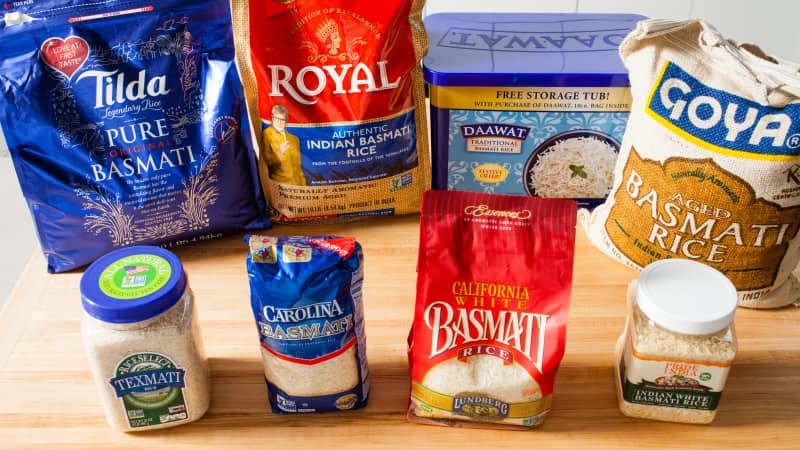Quick-Cooking Basmati Rice
Taste Test
From its extra-long, slender grains to its distinctive nutty flavor and popcorn-like fragrance, basmati is prized around the world. But when domestic and imported choices abound, how do you decide which product to buy?
Published Sept. 1, 2018. Appears in America's Test Kitchen TV Season 19: Chicken and Biscuits

In the test kitchen, we love basmati rice for its fluffy, long, fragrant grains. It's our go-to choice for pilaf, biryani, and the classic Persian dish called chelow and as a base for curry. In India, where basmati originated, this rice is considered part of the national heritage; in 2016 it was granted Geographical Indication (GI) status, similar to the European Union's protection for Champagne and Parmigiano-Reggiano. Indian home cooks prize basmati for its fragrance as well as the extreme elongation and slenderness of the cooked grains. But in the United States, it's one of several choices of long-grain white rice on supermarket shelves, so it's easy for home cooks to overlook this variety.
To learn more, we bought eight nationally available white basmati rices, two grown in the United States and six from the traditional basmati-growing regions of northern India and Pakistan, in the foothills of the Himalayas. We sampled them three ways: plain, using the stovetop directions on each package; in our recipe for Basic Rice Pilaf, where the grains are toasted in butter; and in our Chicken Biryani, which involves parcooking the rice in spice-infused water and then simmering it with layers of caramelized onions, chopped fresh herbs, and pan-seared chicken thighs. In each blind tasting, we rated the rice on flavor, aroma, texture, and overall appeal.
Tasters discovered definite differences, and texture had the biggest impact on our preferences. Some products' grains were extremely long and slender, while others were thicker and shorter, or as one taster wrote, “more like regular long-grain generic stuff.” Some seemed to have a higher number of broken grains. Our tasters liked grains that were smooth; some rices seemed “rough” and craggy. A few were quite soft, with tenderness that verged on “mushy,” while our favorites retained some springiness and “al dente” firmness. Finally, our preferred rices were separate and fluffy, with very little of the stickiness we found in lower-ranked rices.
To understand these differences, we investigated factors that can change basmati's texture. As it turns out, no matter how carefully you cook your rice, some characteristics are out of your hands even before you bring it home. Variety and climate make a difference. Technically, only basmati from the traditional growing region of Northern India and Pakistan can be called basmati. And though the temperature and soil of the GI region may be ideal for producing quality rice, basmati is naturally delicate and low-yielding, which makes it labor-intensive and costly to produce. To bring down prices, many producers...
The mission of America’s Test Kitchen Reviews is to find the best equipment and ingredients for the home cook through rigorous, hands-on testing.

Lisa is an executive editor for ATK Reviews, cohost of Gear Heads on YouTube, and gadget expert on TV's America's Test Kitchen.

This is a members' feature.